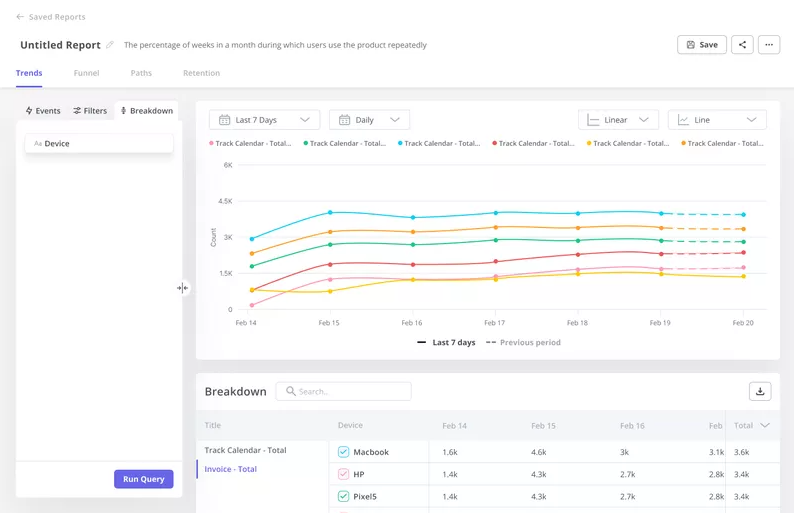EPA Weakens Regulations on Forever Chemicals, Raising Health Concerns
The EPA has announced changes to a rule designed to protect Americans from PFAS, commonly known as forever chemicals, in their drinking water. The agency plans to extend the compliance deadline for limiting PFOA and PFOS, two key chemicals, and rescind regulations on four others, prompting concerns from environmental advocates.
Background: The Biden Administration's PFAS Rule
Last year, the Biden administration introduced a rule setting limits on PFAS in municipal drinking water systems. This rule mandated low levels not only for PFOA and PFOS but also for four additional chemicals linked to various adverse health effects.
EPA's New Approach: Delayed Action and Reduced Scope
Under the new plan, the EPA will remove the four additional chemicals from the rule and extend the deadline for water systems to eliminate PFOA and PFOS to 2031, two years beyond the original 2029 deadline.
Reactions to the Changes
Kyla Bennett, a director of science policy at Public Employees for Environmental Responsibility, criticized the decision, stating, "This flies in the face of their mission and everything they're supposed to stand for."
EPA administrator Lee Zeldin defended the changes in a press release, stating, "We are on a path to uphold the agency’s nationwide standards to protect Americans from PFOA and PFOS in their water. At the same time, we will work to provide common-sense flexibility in the form of additional time for compliance. This will support water systems across the country, including small systems in rural communities, as they work to address these contaminants."
Understanding PFAS: The Forever Chemicals
Per- and polyfluoroalkyl substances (PFAS) are a class of thousands of chemicals used in various industries and consumer products, including nonstick pans, raincoats, firefighting foam, and waterproof furniture protectants. The EPA has linked PFAS to a range of health concerns, including cancer, hormonal imbalances, decreased fertility, developmental delays in children, and reduced vaccine response.
These chemicals are known as "forever chemicals" because they persist in the environment for thousands of years and can accumulate to high concentrations. Studies have found traces of PFAS in the blood of nearly all Americans, and EPA data indicates that half of the US population is exposed to PFAS in their drinking water.
The History of PFAS Regulation
Despite mounting research linking PFAS to negative health outcomes, government regulation has been slow. In the late 1990s and early 2000s, lawsuits, including a landmark case in West Virginia, revealed that producers of PFAS chemicals allegedly concealed the health impacts of their products. As a result, major US manufacturers phased out PFOA and PFOS. However, industries shifted to alternative PFAS chemicals, claiming they were safer.
The Rise of Replacement Chemicals: GenX
Research has since shown that these replacement chemicals may also accumulate in the environment and pose health risks. The EPA has noted that hexafluoropropylene oxide dimer acid and its ammonium salt, used in the GenX chemical class manufactured by Chemours, linger in the environment as long as PFOA and PFOS. Animal studies suggest that oral exposure to GenX chemicals could harm the liver, kidneys, and reproductive systems. The Biden rule set allowable GenX limits in drinking water at just 10 parts per trillion (ppt). However, water tests near a Chemours facility in North Carolina in 2016 showed levels averaging 631 ppt, with some samples reaching 4,500 ppt.
Industry Response and Scientific Debate
Chemours spokesperson Jess Loizeaux stated that the company has invested over $400 million to reduce PFAS discharges from its North Carolina factory and that GenX has a shorter half-life in the human body than PFOA and PFOS.
"Chemours wholly supports setting reasonable and scientifically justified limits for PFAS," Loizeaux said. "But getting the science right is absolutely critical … We applaud EPA’s willingness to review and correct the underlying science."
Concerns About the Safety of Replacement Chemicals
Erik Olson, a senior director at the Natural Resources Defense Council, countered, "The idea that somehow the newer chemicals the industry has shifted to are safer is baloney. The EPA has found that these chemicals are very dangerous, and that’s why they’re being regulated."
EPA's Justification for the Changes
EPA spokesperson Molly Vaseliou stated that the agency is reconsidering regulatory determinations to ensure compliance with the Safe Drinking Water Act. "EPA’s actions are designed to reduce the burden on drinking water systems and the cost of water bills, all while continuing to protect public health and ensure that the agency is following the law in establishing impactful regulations such as these," she said.
Legal Challenges and Potential Backsliding
The legal path forward for the EPA's changes is unclear. Erik Olson claims that the extension of the compliance deadline is "clearly illegal," citing provisions in the Safe Drinking Water Act that prohibit agencies from easily backsliding on regulations.
A coalition of manufacturing and chemical industry groups filed a lawsuit against the original Biden rule, arguing that it was an abuse of the agency’s authority. The EPA has requested an extension in the case to allow for discussions on future proceedings.
Impact on EPA's Research and Development
The attempted rollback comes as the EPA is moving to gut its Office of Research and Development (ORD), which conducts scientific research on various issues. The staff at ORD have been told to apply for other positions within the agency, and cuts are expected. Eliminating ORD could hinder progress on forever chemicals research.
"If those folks are all let go, we’re concerned that basically it’s going to be a decade plus away from progress on forever chemicals, which is extremely worrisome," says Olson.
Key Takeaways
- The EPA is weakening regulations on PFAS in drinking water, extending compliance deadlines and rescinding limits on some substances.
- Environmental groups are concerned about the potential health risks and the legality of the changes.
- The move comes amid ongoing debates about the safety of replacement chemicals and the EPA's commitment to protecting public health.













